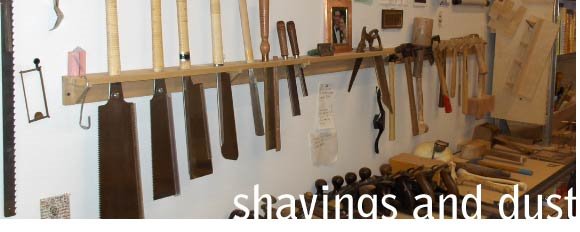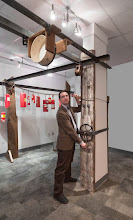This trip has been a constant juxtaposition of the very old and the very new (we recently went to see this building designed by Kengo Kuma that is pretty stunning, and built in part by temple carpenters imported specifically.). Toggling back and forth has made me constantly aware of my default stance that old stuff is better than new stuff, which of course I do not believe across the board, but that tends to color how I see the world.
We also are getting to spend a fair amount of time with tools and the way things are made, which I also love, and which is new for a lot of these students, as it turns out. It has been exciting to see them get excited about making and about the idea that they can make stuff. And I get to also see some incredible stuff, of course.
The story goes that in 1610, a temple carpenter in Nagoya started a carpentry business named after himself, Takenaka. Today the descendants of Masataka Takenaka run one of the five biggest architecture and engineering firms in the country. When they say it is a family business they are not lying. In about 1985, the corporation decided that it was worried about the decline of traditional wood working and carpentry in Japan and started a museum dedicated to wood and wood working tools.
Holy crap.
When the Japanese get it in their heads to do something, they don't ever really go halfsies. The Takenaka Carpentry Tools Museum is one of the finest museums of any type that I have visited anywhere ever. It rivals the Henry Ford, it rivals the Smithsonian. The displays are in Japanese and English, they are thoughtful, they are interactive, they are well thought out. It was just a joy to be there. There were video demonstrations of things that the students otherwise would never have seen, like two people using a saw to make lumber out of trees. There were displays about making tools. There were different species of wood with plane shavings that you could smell. I mean, if I had several million dollars and a year I could could not have set up a better shrine to traditional Japanese carpentry. Also? There is a full-time staff of six architectural historians.
PEOPLE! Come to Kobe! Go to this museum!
Actually, they are doing a joint project with GSD at Harvard next year, and part of the collection will be there. So go there, if you can't come to Japan.
There is a reverence and a gentleness to the way that the tools are shown that came through to me, an idea that there is something that is still relevant and necessary about these tools. And every edge tool was meticulously sharpened, something we would not do in the States, which betrays a nuanced difference between attitudes: in the States I think we would want to preserve the object in the moment it came to the museum. In Japan, at this museum, it was clear that the displays were put together by people that saw these tools as living objects. They have a purpose and a use, and as Miya-Daiku Ogawa says in a video there "Sharp tools don't lie." You would no more display a dull chisel than you would display a 1903 Harley-Davidson with square wheels on it. It just would not work that way, and this is an object that is made to work. So you show it the way that it would be if it was working.
It is a difference in stance that I have commented on here before, this idea of what is "real," what is "historically accurate," and I am really interested in it. History, of course, is notoriously subjective. It is, as the famous quote goes, written by the winners. And so who are we to say what the best way to celebrate and present history is, and how best to talk about it? Is it lying to say that a building that was built this year is the exact same building that was built a hundred years ago, if it was built in the same way with the same tools? Not from a certain (very Japanese) point of view. Similarly, it is only appropriate to sharpen a plane iron to a mirror hone before presenting it.
I suppose that one of the things about travel is that it allows you to step back and look at the assumptions that you make every day and question them. I sure am doing that here, sometimes on a daily basis. Here are some images from the museum.
 |
| Two-person saw with an instructional video. There was also a video about how to assemble the saw. |
 |
| A "Standard Carpenter's Tool Chest" |
 |
| A display of sumitsubo, which they use instead of chalk lines. |
 |
| A very funny Indonesian wooden hand plane. |
 |
| "Woods of Japan" complete with end grain, face grain, and shavings to smell. |
 |
| Adzes. Lots of adzes. |
 |
| More joint samples. |
 |
| Yet more joint samples |
 |
| "How to make a ryoba saw." |
 |
| "A Miya-Daiku's Tool Chest" |
 |
| The different finishes and the waste that comes from using an adze, a spear plane, a roughing plane, and a hand plane in that order. Holy cow |














1 comment:
What?! They seriously have shavings to smell? I can only imagine how happy you were in this place. Which makes me happy. And makes me want to go there.
Post a Comment